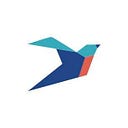How Agile Methodologies Helped My Kids Adjust to Virtual Schooling
By: Valerie Nifora
When the schools announced the kids wouldn’t be returning to school, I’ll confess, there was a mild panic that ran through my household. The operative questions became: “Now what?” and, “When will they go back?”
As many of us struggled to figure out how to manage the new requirements of home schooling and work obligations, I reached back into my business tool kit and pulled out Agile Methodologies.
This is how I did it.
Daily stand up meetings.
For those not familiar with Agile, as the name suggests, a daily stand up is a daily meeting when team members provide regular updates and raise any blockers, challenges, or concerns so they can be resolved quickly and projects can move forward.
For my sons and I, this became our process during breakfast. There, huddled around our bowls of cereal, we’d talk together about the classwork assignments for the day, discuss any concerns or issues, and provide suggestions on how to tackle problems.
By the time breakfast was completed, the kids knew what was expected of them for the day, had some good ideas on how to get started, and felt comfortable that they’d be successful by 3:00 PM, when my cell phone would go off signaling the end of their school day.
There were hugs as motivation to get started, and then they marched up to their individual school-provided laptops. And although my youngest did inform his teacher once that the change in the assignment would now require him “to work overtime” to complete it, it seemed to be a good way to start the morning.
[Related: Overwhelmed Remote Working Parents: I’ve Made All the Mistakes So You Don’t Have To]
The scrum board.
Boards help Agile teams organize their tasks and priorities. As a visual representation, it allows teams to keep focused on important tasks, while also keeping in mind any backlog projects.
To achieve this process, my kids’ school chose to have everyone use Google Classroom. Much like virtual or physical post-its that you might see on your board of choice, Google Classroom allowed the kids to take a look at the assignments and due dates and then organize them.
Full disclosure: It wasn’t exactly the same as a typical scrum board, but it did give us a nice overview for planning. And if your school doesn’t use Google Classroom, a few stickies on a wall with tasks aligned to subjects can work just as well.
[Related: Why We Need to Let Go of Gatekeeping and Perfectionism During Lockdown]
The retrospective.
At the end of each iteration, essentially a “timebox” for a series of tasks to be complete, we’d hold a retrospective. For the kids, the iteration ran weekly, from Monday to Friday. And on every Friday, we’d meet over chocolate milk and a snack, to evaluate how we thought we did for the week.
Was there a different tactic that worked better? Should math assignments be completed on Monday mornings instead of dragging them out to Friday? Or was it better to start off with reading? Each kid would review his learning for the week and make adjustments for the following week.
I’m certainly not sure what September will hold for any of us as it relates to school, but I do think after this experience, they’ll be prepared to enter the digital workforce. After all, they’ve not only mastered some basic Agile techniques, but they learned the fine art of virtual meetings with their teachers and classmates.
As my youngest shared to his elementary class (and I overheard), “My mom told me I can’t walk about during a call, and I need to pay attention.” Pretty much kiddo. Pretty much.
[Related: Tips on Maintaining Sanity for the Home-Schooling Working Parent During COVID-19]
—
Valerie Nifora is the Senior Marketing Manager for Accenture.
Originally published at https://www.ellevatenetwork.com.
